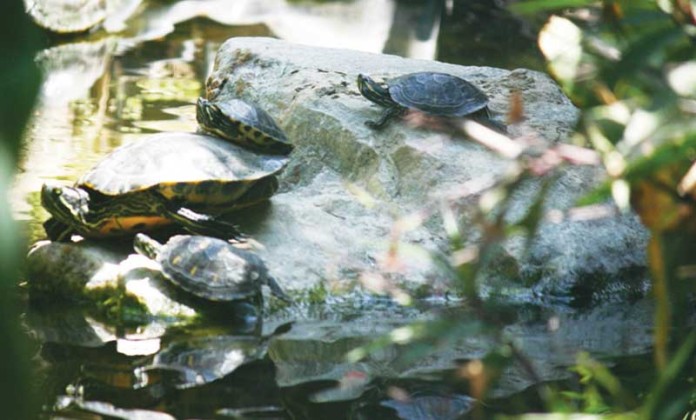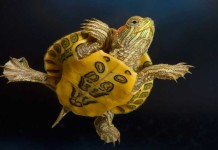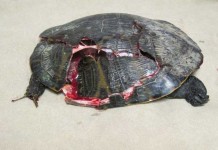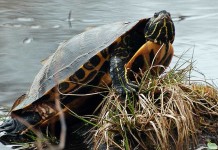Your red eared slider tank, despite what you may think, should be treated like a fish tank. If you’ve ever been serious about keeping fish, you know that they require healthy, balanced water to thrive. Turtles are not as water-intensive, but they nevertheless need some attention in that area. pH, for example, is not as important an issue with turtles as it is for fish, but it’s a good idea to go ahead and check it with one of the strip kits you can get from a pet store for good measure. A pH of 6-8 is good for slider water and you can raise or lower it with other products available at the pet store if need be.
Just like with fish tanks, you need to cycle the water in your turtle tank. “Cycling” refers to the nitrogen cycle that occurs in healthy turtle or fish water. The nitrogen cycle is accomplished by beneficial bacteria that convert waste, such as nitrites and ammonia, into nitrates, which can be controlled via water changes. The nitrogen cycle is started by using products that you get at the pet store. Optimally, this should be done before you even put your slider in the tank, but in a pinch you can do both at the same time.
You will also need to consistently check your slider’s water for ammonia, nitrites, and nitrates. Fortunately, there are kits at the pet store to test for these and tell you when the levels are dangerously high. Sliders, of course, can withstand higher levels of these pollutants than fish, but to be safe don’t let it get much higher than what the kit suggests. If your waste levels are spiking, do more frequent water changes (as much as 3-4 times a week if you have to) to bring it under control.
Another issue for turtle water is chlorine. Chlorine is one of those things that may not even bother most sliders, but if your tap water smells at all like bleach you may be in for some problems. Excessive chlorine can cause eye problems with sliders, so to be safe always use a dechlorinator – especially when doing water changes.
The most important thing about water quality of red eared sliders, of course, is your filter. Always get the biggest filter you can, and don’t settle for anything less than a filter sized for double the size of your tank. Canister filters and power heads are the best kind to get and can provide a good substrate for your beneficial bacteria to thrive.











